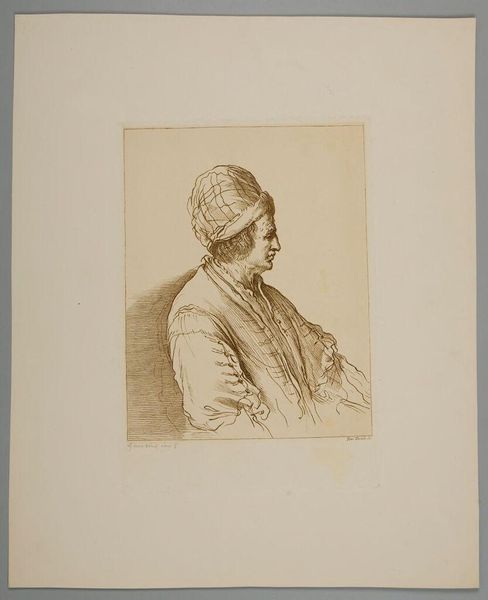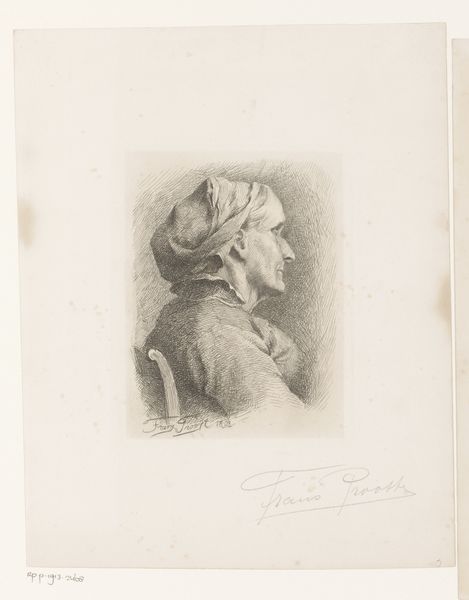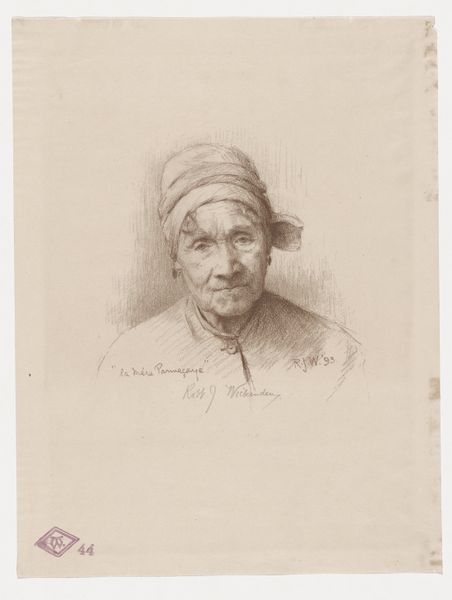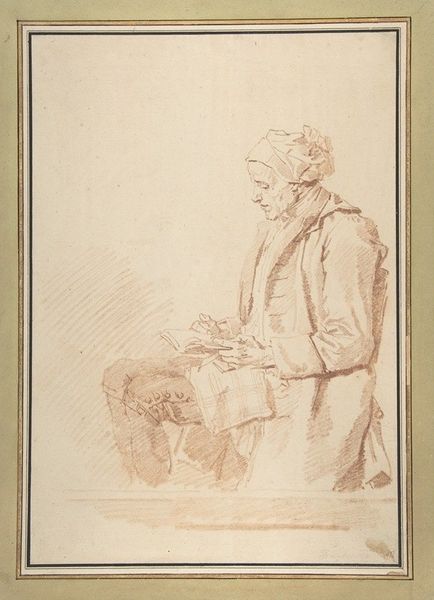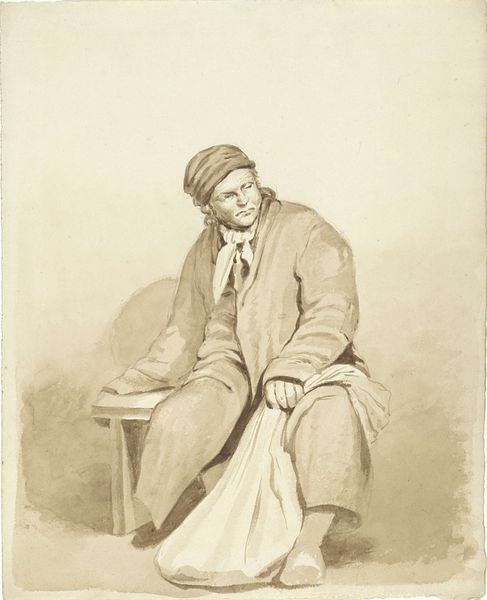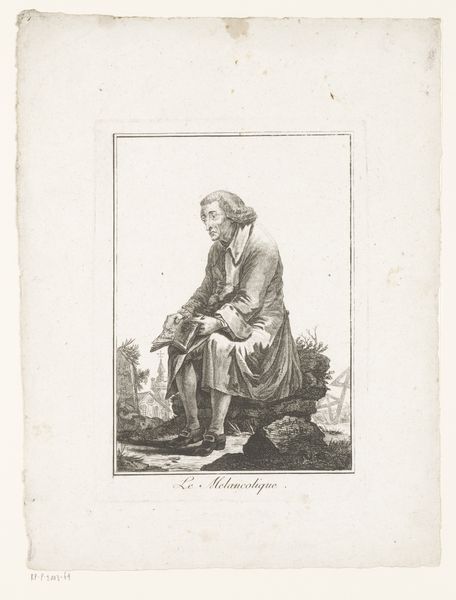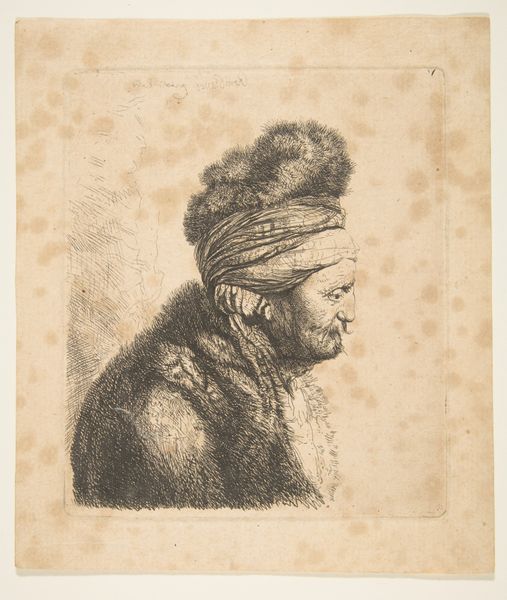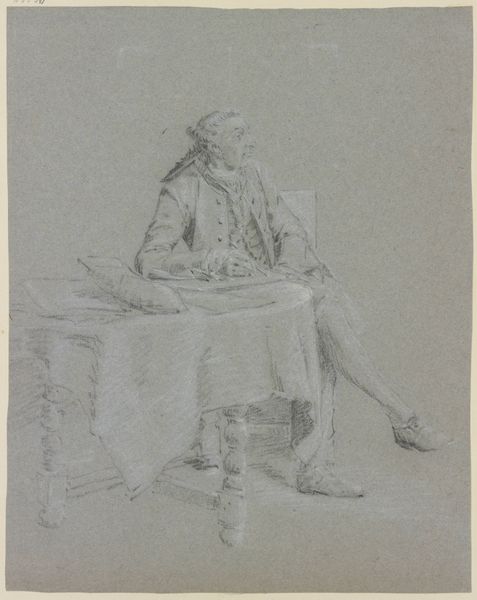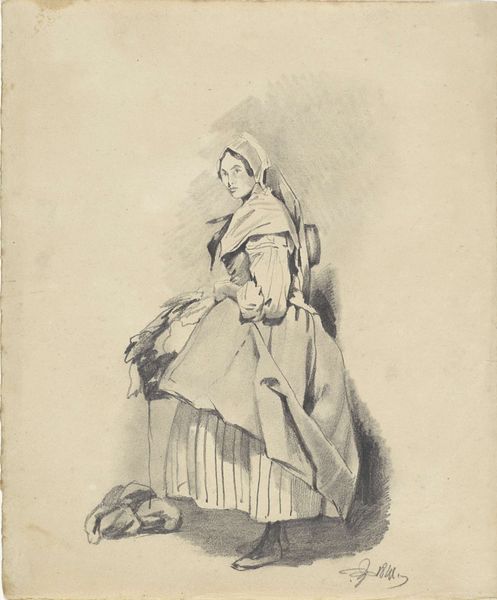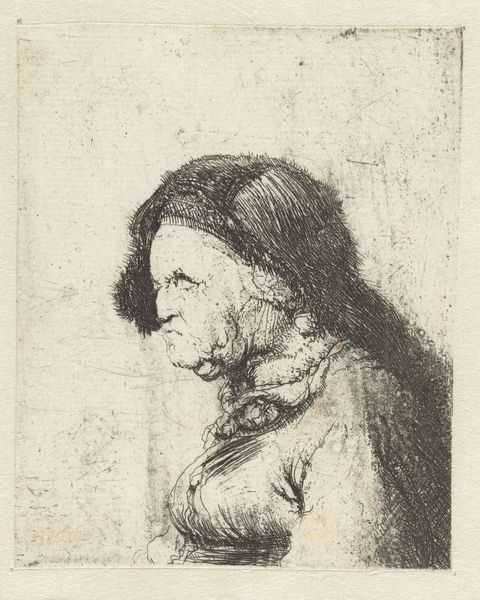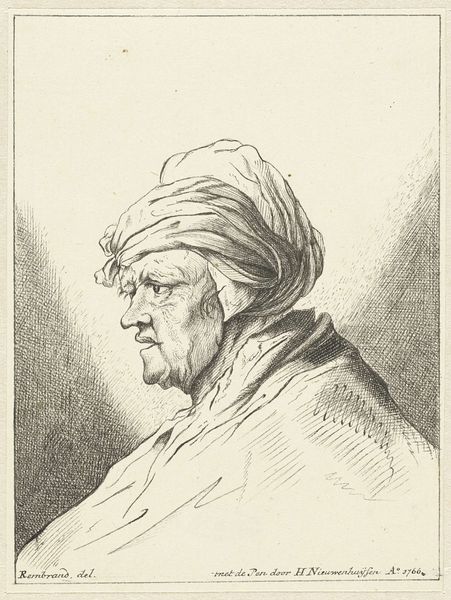
Fru Anneken Marie von Würden f. Sponum, H.E. Freunds svigermor. 1844
0:00
0:00
drawing, pencil
#
portrait
#
drawing
#
pencil drawing
#
pencil
#
portrait drawing
Dimensions: 227 mm (height) x 158 mm (width) (bladmaal)
Curator: Here we have P.C. Skovgaard's 1844 pencil drawing of Fru Anneken Marie von Würden, the mother-in-law of fellow artist H.E. Freund, currently residing at the SMK. What's your immediate take? Editor: Stark, in its quiet way. The precision of the pencil work almost feels photographic, capturing a life lived, etched on her face. I wonder, though, about the material conditions around a "drawing" – what kind of paper, what pencils… who produced those materials? Curator: Well, considering its display in the Statens Museum for Kunst, it definitely occupies a certain echelon of cultural value. Skovgaard was establishing himself within the Danish Golden Age—this portrait speaks to the networks and familial connections underpinning artistic success. Who you portrayed mattered, socially and professionally. Editor: Indeed. The very act of rendering her in pencil elevates her. I am interested in the labor. Notice the detail in the rendering of her lace bonnet - a manufactured object made from textiles. It tells a story of domestic craft but also global trade routes bringing in the thread to make the textile to make the lace. It gives the drawing a particular materiality, grounding it in everyday life and commerce. Curator: That's fascinating. And consider how portraiture itself was shifting. Photography was emerging, challenging the artist's role. Perhaps Skovgaard chose pencil precisely to showcase his technical skill, offering something the new medium couldn’t. This image presents this woman in such a traditional almost revered posture as someone central to a wider artistic society, rather than just a domestic individual. Editor: And look at the subtle shading, giving form to the fabric of her coat, her clothing – not some idealized gown but probably what she wore regularly. The skill is there, undeniably, in rendering such humble cloth with such care. This speaks to skill, class and its material manifestations through cloth. It moves her from the periphery into the centre. Curator: It reminds us that artistic circles are rarely solitary, they relied on familial structures, relationships, even the patronage or approval of figures like Fru von Würden to gain recognition and shape careers. Editor: Yes. It shifts the understanding away from a genius artist in isolation, and allows us to remember a wider world of creation and exchange Curator: Exactly, reminding us that the reception and creation of this work is much more multifaceted. Editor: Precisely; material conditions frame social and historical perceptions.
Comments
No comments
Be the first to comment and join the conversation on the ultimate creative platform.

